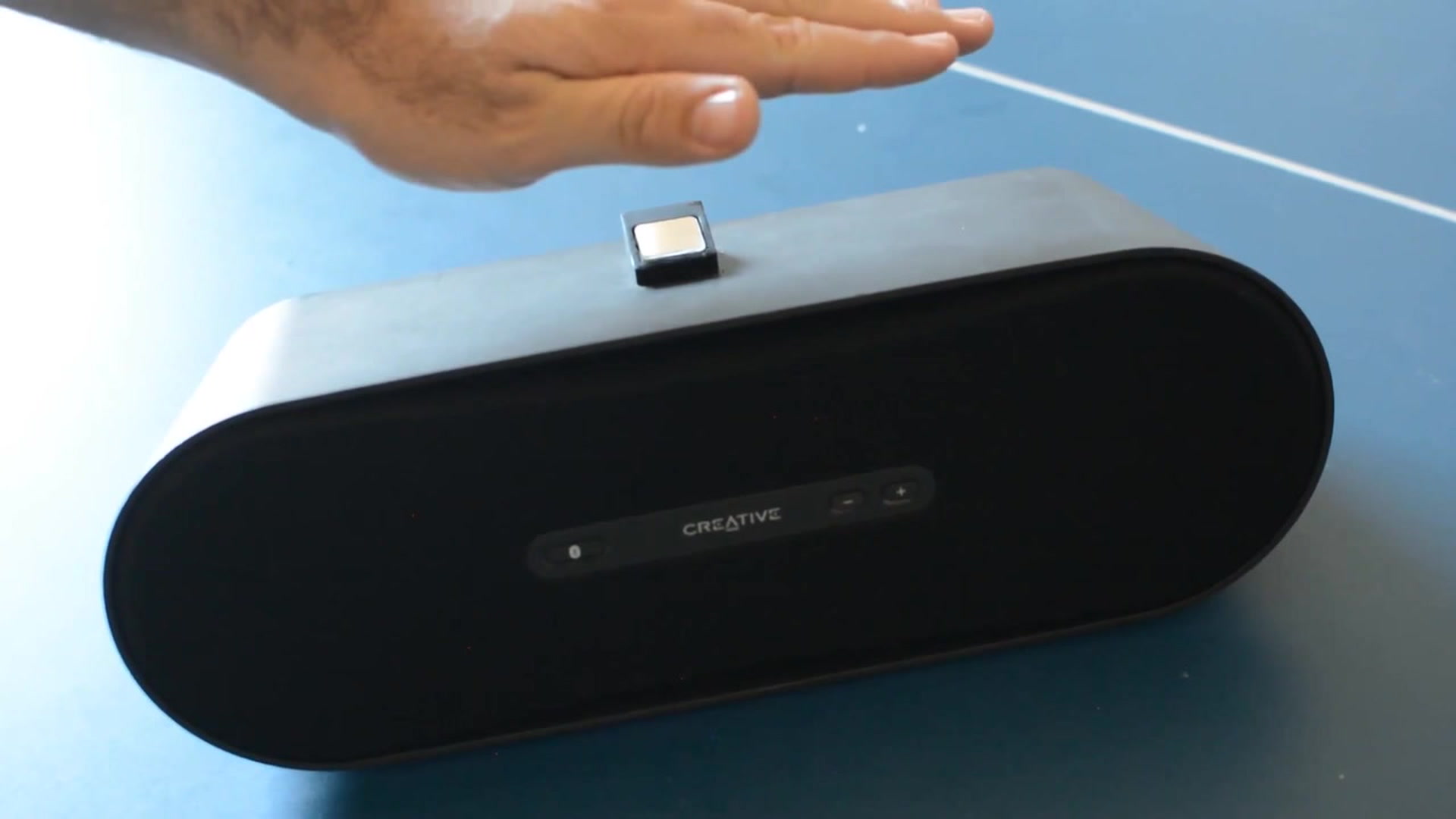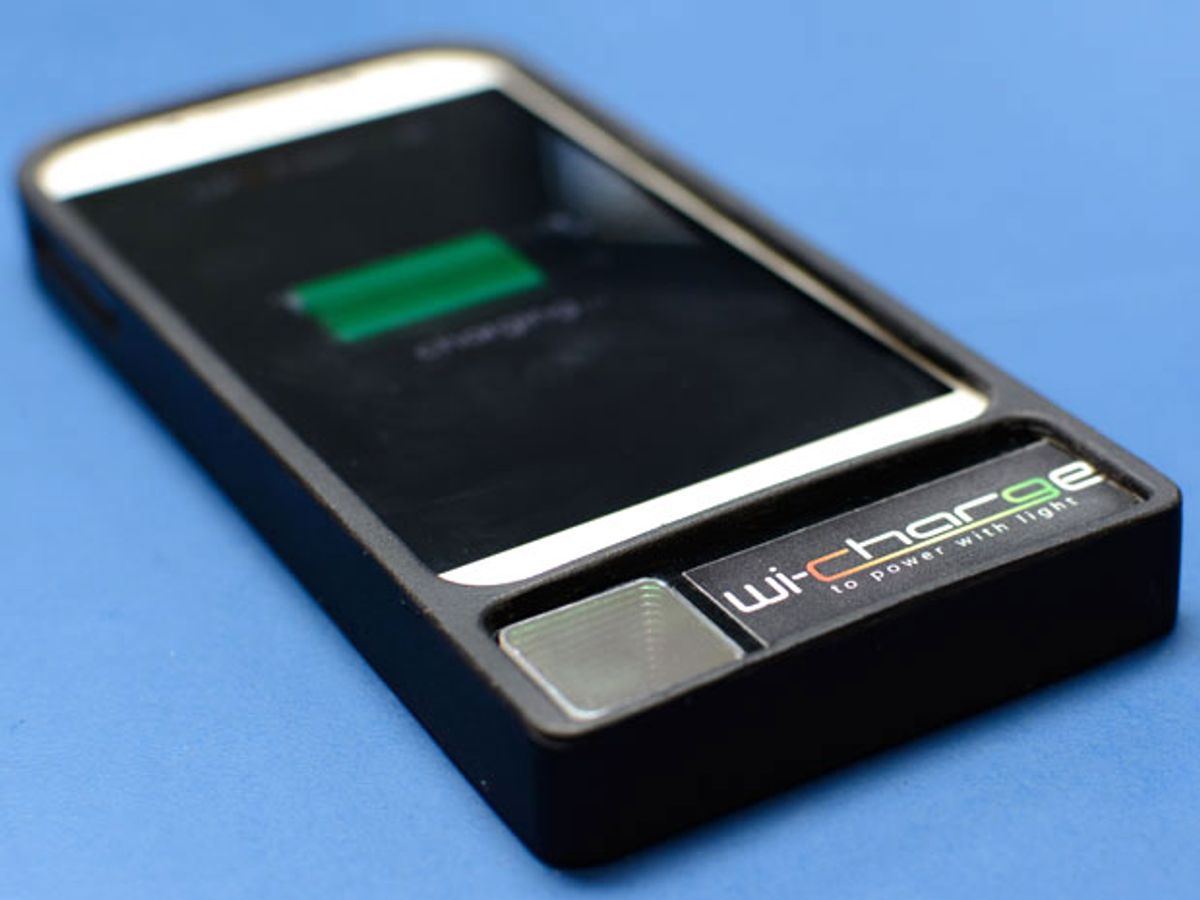In the world of wireless gadgets, charging is still a big problem Israeli startup Wi-Charge is looking to change that by allowing us constant wireless charging using infrared laser technology.
Broadly speaking you can divide wireless power technologies into two general categories: near field (a few centimeters or even physical contact) and far field (several meters or more). In the near field category there are quite a number of companies and several protocols including Qi, PMA/Rezence, and Open Dots all competing for close range wireless power delivery. All common commercial near field wireless power technologies today use either tightly coupled (inductive, physical contact between the transmitter and the receiver) or loosely coupled (resonant, with up to a few centimeters of distance). In both cases the transmitter and receiver need to be very close to each other.
Far field technologies on the other hand are still in their infancy, though some startups—such as uBeam and Energous—are promising big steps soon. For the most part all these approaches are limited in either distance or power, or both.

Wi-Charge believes its solution is different enough from its competitors to overcome their limits. Ortal Alpert, Wi-Charge's founder, had worked for years developing advanced optical storage solutions for his former startup. During this time he frequently travelled the globe on business, which forced him to constantly look for places to charge his mobile devices. Based on his experience as an optical engineer, he developed a new technology for wireless charging that uses infrared lasers and relies on two unique, and now patented, ideas.
To understand these ideas we first need to go back to the laser and how it works. A laser is usually described as a device that bounces light between a pair of mirrors on either end of a gain medium, which amplifies the light with each successive pass. Usually one of the mirrors inside this cavity is partially transparent allowing some of the light to exit as a laser beam.
Wi-Charge's ingenious idea was to take this cavity, which is typically a closed device, and turn it into an "open unit" where one of the mirrors is located for example in a light fixture on the ceiling and the other one on the receiving device. The semiconductor gain medium is located in the transmitter and provides the photons that are harvested by the photovoltaic cell at the receiver.
Powerful lasers can be dangerous, however Wi-Charge uses a class 1 infra red laser (safe under all conditions of normal use) and more importantly the "external cavity" design means that the instant anything crosses the path of the laser—your hand, your eye—amplification will stop and the energy will drop.

The second unique idea has to do with being able to fix and maintain the connection between the transmitter and the receiver. Wi-Charge's design uses retro reflective mirrors instead of regular mirrors. These reflect light back to its source with minimum scattering. (You can sometimes find retro reflective mirrors on road signs and bicycles and a few were even left on the moon by the Apollo team.) Using retroreflectors makes aligning the mirrors unnecessary hence the beam is maintained even when the receiver is moving around—something demonstrated to us during a visit last year. During operation the transmitter continuously sends a very low power infrared signal across the room and when it hits the retro reflector on the receiver, the signal is returned and a connection is made and amplification begins. The connection will be maintained as long as it is in range and there is a line of sight.
Using a laser does have one distinct disadvantage–it requires a line of sight between the transmitter and the receiver. This means that you won't be able to charge your smartphone while it is in your pocket and instead need to put it face up on the table. According to Alpert, "we use our phones every 15 minutes on average, for Facebook, Twitter, Whatsapp, email and even for talking. It means that once we're seated for more than 15 minutes, the phone is usually out on the table— and ripe for wireless charging".
One of the big advantages of Wi-Charge's technology is its ability to deliver almost any amount of power, from few milliwatts for sensor powering to hundreds of watts used in industrial or even military applications. For the consumer market with devices such as smart phones and wearables, Wi-Charge is looking to start with a system capable of delivering 10 W.
Unlike other far field technologies, Wi-Charge has a pretty small footprint. A receiver can be as small as your phone's camera module and still charge from a distance of ten meters, Wi-Charge claims. For more power demanding applications and longer ranges both the transmitter and receiver will have to be larger, but not dramatically so. One potential application of the technology can be for powering a drone for border patrol or installation security. In this scenario a drone will receive power along its way from a transmitter mounted on a patrol car or on top of a building or tower from a distance of dozens or even hundreds of meters away and can stay in the air for countless hours or even days.
Laser power beaming isn't a new concept. Researchers from NASA's Marshall Space Flight Center and the University of Alabama powered a small-scale aircraft that flew solely by means of propulsive power from a ground-based 1-kw infrared laser back in 2003. Japan's Aerospace Exploration Agency (JAXA) presented an even more ambitious wireless power project in early 2015. Researchers from JAXA were able to deliver 1.8 kW "with pinpoint accuracy" to a receiving antenna 55 meters away, using carefully directed microwaves.
Seattle-based LaserMotive, which in 2006 won NASA's Power beam challenge is working on over the air as well as over fiber optic cable transfer of power to flying drones. Wi-Charge says it's inherent safety and small footprint would allow it to ground-power private and commercial drones in urban environment.

In a typical use case scenario, one transmitter in the ceiling (within a light fixture for example) will be able to charge up to four devices inside a room. In a demo that at Wi-Charge's offices in Rehovot, Israel, we saw a working prototype that included a transmitter in the ceiling and a smartphone with a special case containing a mirror and photovoltaic cell. It was able to charge from a distance of about 3 meters. The modified phone charged slower than if it had been plugged in to a wall socket, but according to Wi-Charge, the final product will be able to charge one smartphone at the same rate as a wired charger; though two devices will take longer. We were also shown a modified music player and speaker that worked without any batteries in the same way.
Alpert promises that the first product based on Wi-Charge's technology will be available in late 2016 and would be Internet-of-Things or smart home related. A year later the company is planning to release a residential mobile phone charging solution that will include a transmitter and phone case at the retail price of just under US $200.



